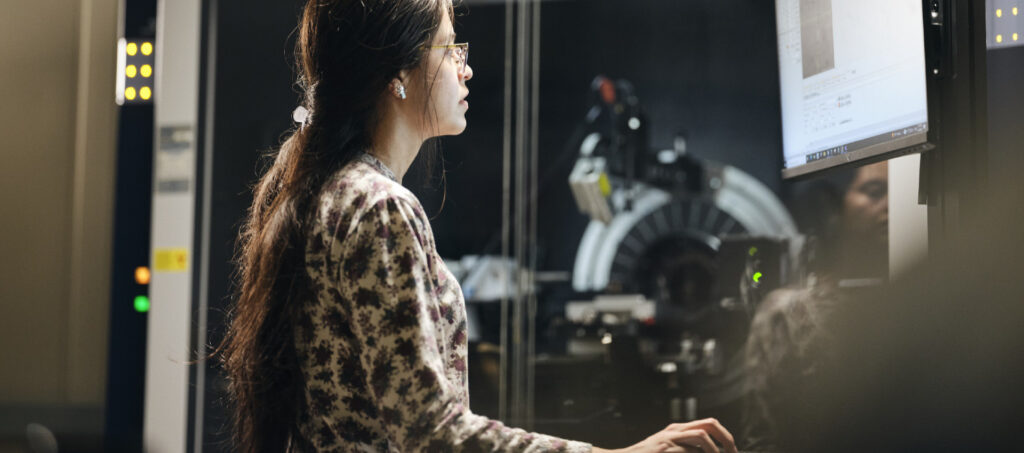Innovation
Timken Research & Development: Where Theory Meets the Real World
The world is in perpetual motion. Today’s advanced industrial equipment achieves what was aspirational just a decade ago, from wave power technology to hoisting massive ships through actual mountains.
A crucial part of any mechanical power transmission system, bearings enable components to rotate while carrying weight and pushing force through a drive mechanism to make motion possible. Dr. Bill Hannon, manager, product R&D, talks about the science that helps Timken experts select the best bearing design to deliver efficient system performance — and the algorithms that drive the company’s latest work.
Q: How does Timken Research & Development (R&D) knowledge influence next-generation customer systems?
Hannon: Almost all of our research starts as the result of a customer or business request. We’re able to develop efficient bearing products because we have a community of smart people working toward the common goal of solving customer problems, whatever their role. Timken scientists all study diverse fields. One specializes in overcoming the barriers of friction while another focuses on how cracks form inside materials. Others examine high pressures or the impact of noise, vibration and harshness in mechanical systems. Our technical strength comes from integrating our specialties into a system-level response that meets specific needs like greater efficiency and higher performance.
“Our job is to find answers that may fix a problem for one customer, and ultimately eliminate the problem for all future customers.”
Dr. Bill Hannon
Manager, Timken Product R&D
Q: You personally specialize in physics and mathematics. What is your process for turning scientific theory into real-world solutions?
Hannon: As much as I love to read and study, I believe scientists have an obligation to apply what we learn in the real world. There’s an old saying from Frank Westheimer, a brilliant physical organic chemist, that says “a month in the lab can often save you an hour in the library.” It implies many things have already been investigated and can be learned from a book. So that’s where I start.
Early in my career, I spent three months in the library figuring out how to create an algorithm to predict temperatures in a system with bearings, gears and lubrication. I had spirited talks with colleagues and started over a few times. Then it took a lot of mathematical modeling and coding to create an algorithm Timken engineers could use in making bearing recommendations. Today, our body of existing research and computing tools are more advanced, but the process is still the same. We’re just moving into an era of big data where we can take a more statistical look at problems than we have previously.
Q: How does your current work help customers select the optimal engineered bearing for their application?
Hannon: We translate our research and algorithms into functional tools like Syber Bearing System Analysis software. Our application engineers use the software to replicate a customer’s mechanical power transmission system and select the most effective Timken products to use in that system. Our work also informs engineering tools available directly to customers.
These tools find the right solution most of the time. But as technology advances and application requirements become tougher, sometimes we encounter new hurdles. Then, it’s back to the library to find the solution. Sometimes we’re starting from very theoretical observations; sometimes from really practical ones. It’s really the marriage of those two that helps us create that engineered value and wins our customers’ confidence.

Q: Beyond creating and optimizing algorithms, how does your team support day-to-day problem solving that keeps customers moving forward?
Hannon: Timken has a robust feedback loop throughout R&D and engineering, so we’re constantly getting new questions. It could be something simple like a customer wondering why the startup torque of a bearing doesn’t match what was modeled. It could be more complicated, like an internal debate over which laws of viscosity should be considered for a new product. Our job is to find answers that may fix a problem for one customer, and ultimately eliminate the problem for all future customers. This daily experience also keeps our theoretical team tethered to reality. It’s something we wouldn’t get in a more academic setting.
Q: What does the future hold? What kinds of algorithms will the next generation of Timken scientists develop?
Hannon: We’re still solving the same number of challenges our predecessors did 50 and 100 years ago. It’s just that now, there’s no low-hanging fruit. In the 1960s, Timken was answering small questions, like what is a bearing’s contact stress, using computer modeling and some broad assumptions. By the 1980s R&D became more specialized, and what we learned created fewer assumptions. Today, we’re delving more deeply into our fields of study to get even more refined answers. It might mean it’s harder to find an easy win, but we’re up for the challenge.
Timken research and development begins at the intersection of capability and opportunity. Learn more about the company’s investment in a full range of technical pursuits from measurement science to manufacturing R&D.
Published: 2024/01/3
